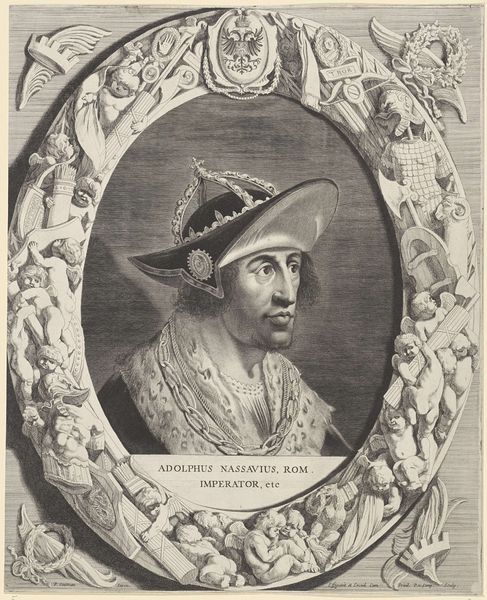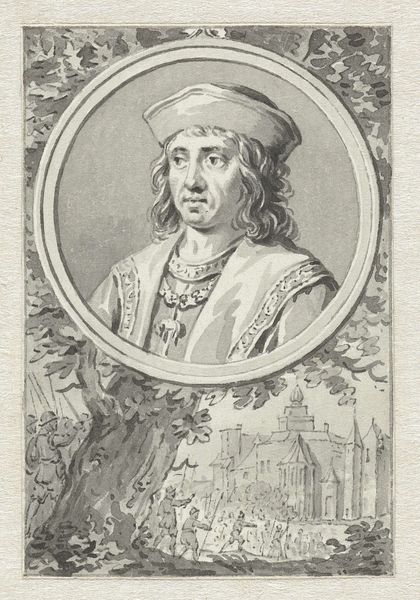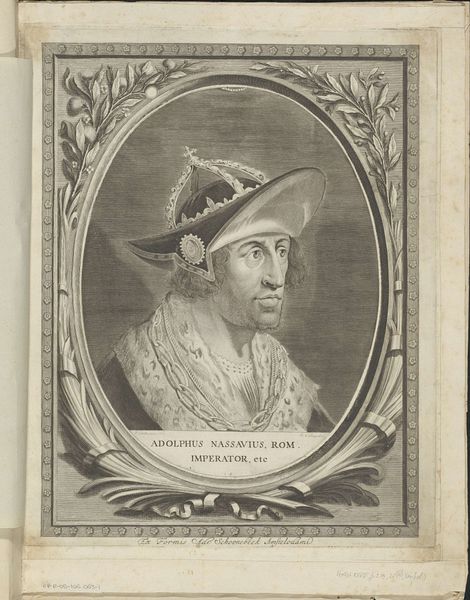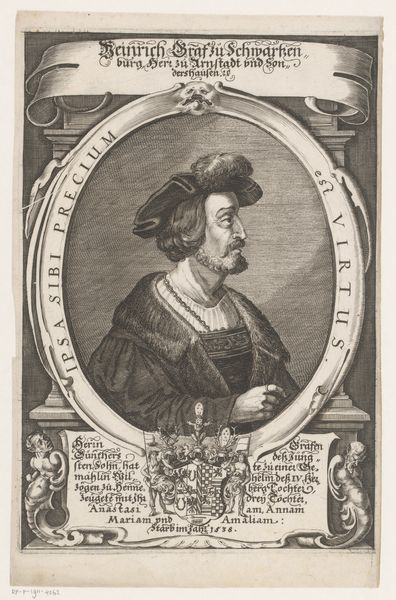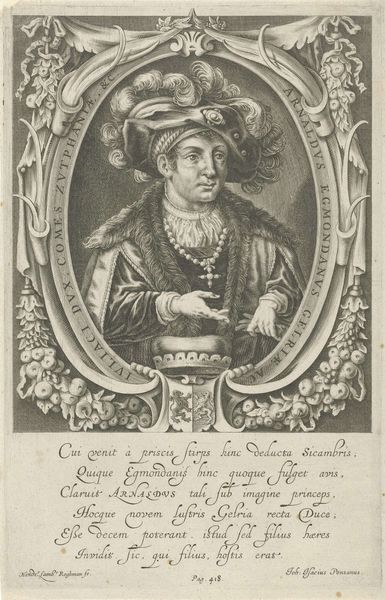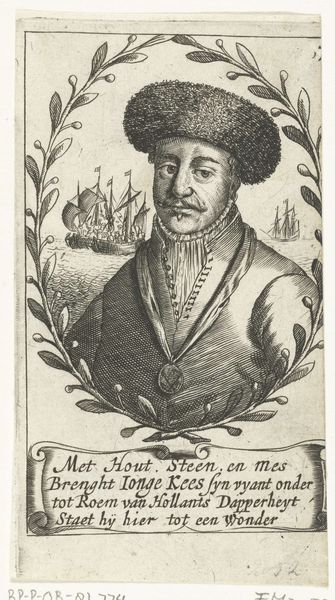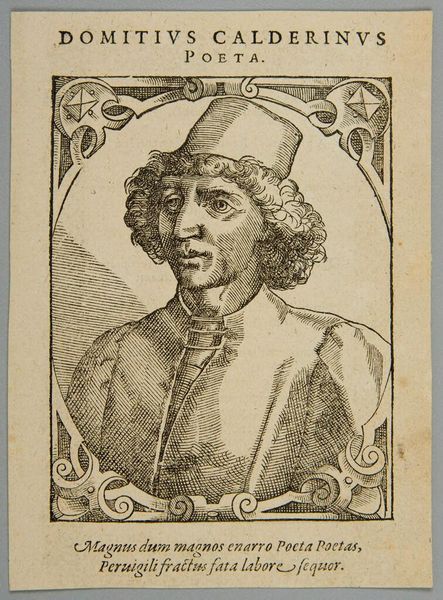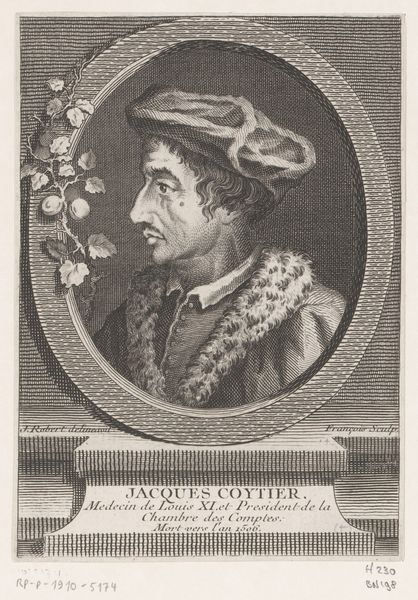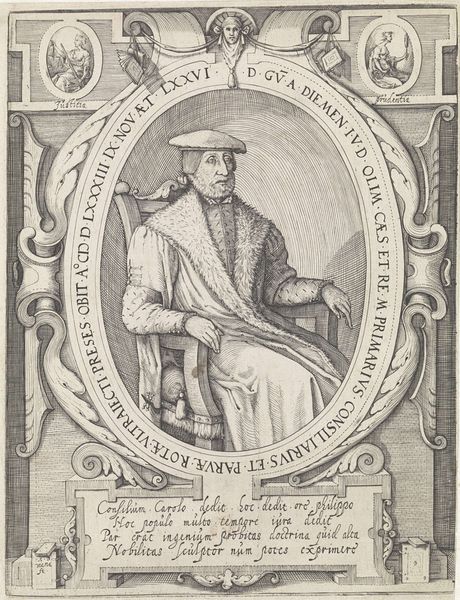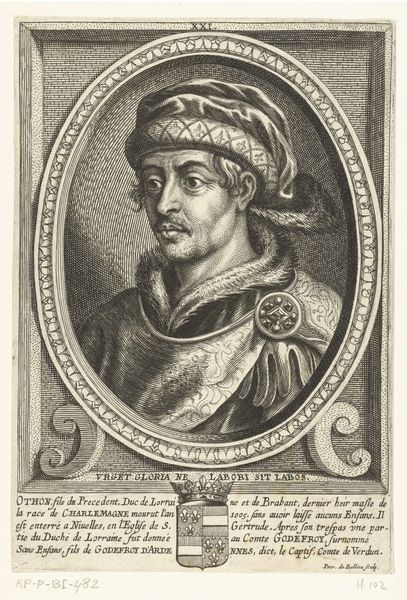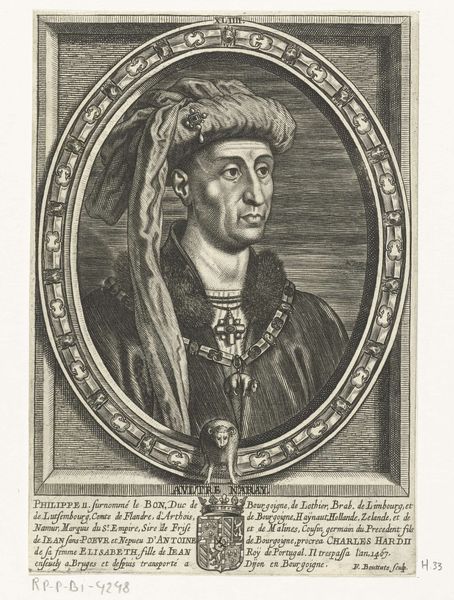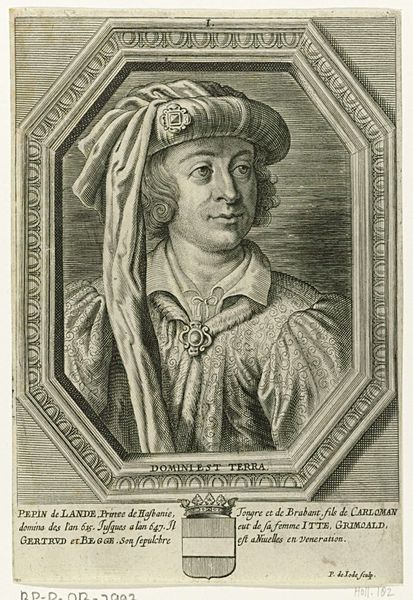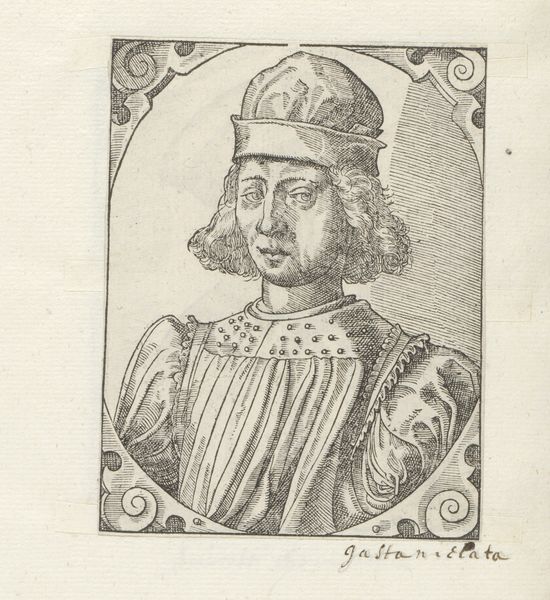
print, engraving
#
portrait
#
baroque
# print
#
figuration
#
line
#
history-painting
#
engraving
Dimensions: height 153 mm, width 97 mm
Copyright: Rijks Museum: Open Domain
Curator: At first glance, this 17th-century print renders a noble subject rather sternly. What strikes you about its form? Editor: The intricate line work immediately catches my eye. There is such precision in capturing the details of the clothing and the textures of the fur. And the way the portrait is framed with that ornate cartouche… very Baroque! Curator: Indeed. This print portrays Adolf of Nassau, who was Count of Nassau and also King of Germany in the late 13th century. It’s intriguing how these prints functioned, really, not just as historical records, but as powerful tools for shaping historical narratives and reinforcing social hierarchies. Editor: I see what you mean. I wonder, too, about the use of engraving to create this image. That choice emphasizes clarity and perhaps an objective depiction of Adolf, although any portrait is inherently an interpretation. The artist’s hand is evident, yet somewhat restrained. Curator: The engraving’s creation and distribution would have been significant socio-politically, circulating images and ideas, crafting specific narratives. Did people perceive a "true" likeness, or understand it as propaganda, shaping and supporting power? It asks larger questions of its reception at the time, don't you think? Editor: Absolutely, the cross-hatching is intense! It contributes to the image's tonal depth and almost sculptural quality. Look at the king’s garments, adorned with a massive chain that reinforces ideas about wealth and station. Curator: Beyond the technique, it’s important to also realize how someone like Adolf of Nassau was remembered—or how his image was manipulated—in later centuries, which says as much about those later periods as it does about him. These images play a crucial role in collective memory. Editor: The longer I examine it, the more I appreciate the skillful and symbolic way the artist created this characterization. Curator: Exactly! Examining how that historical narrative continues to resonate and shift reveals much about how power and identity are performed and solidified.
Comments
No comments
Be the first to comment and join the conversation on the ultimate creative platform.
